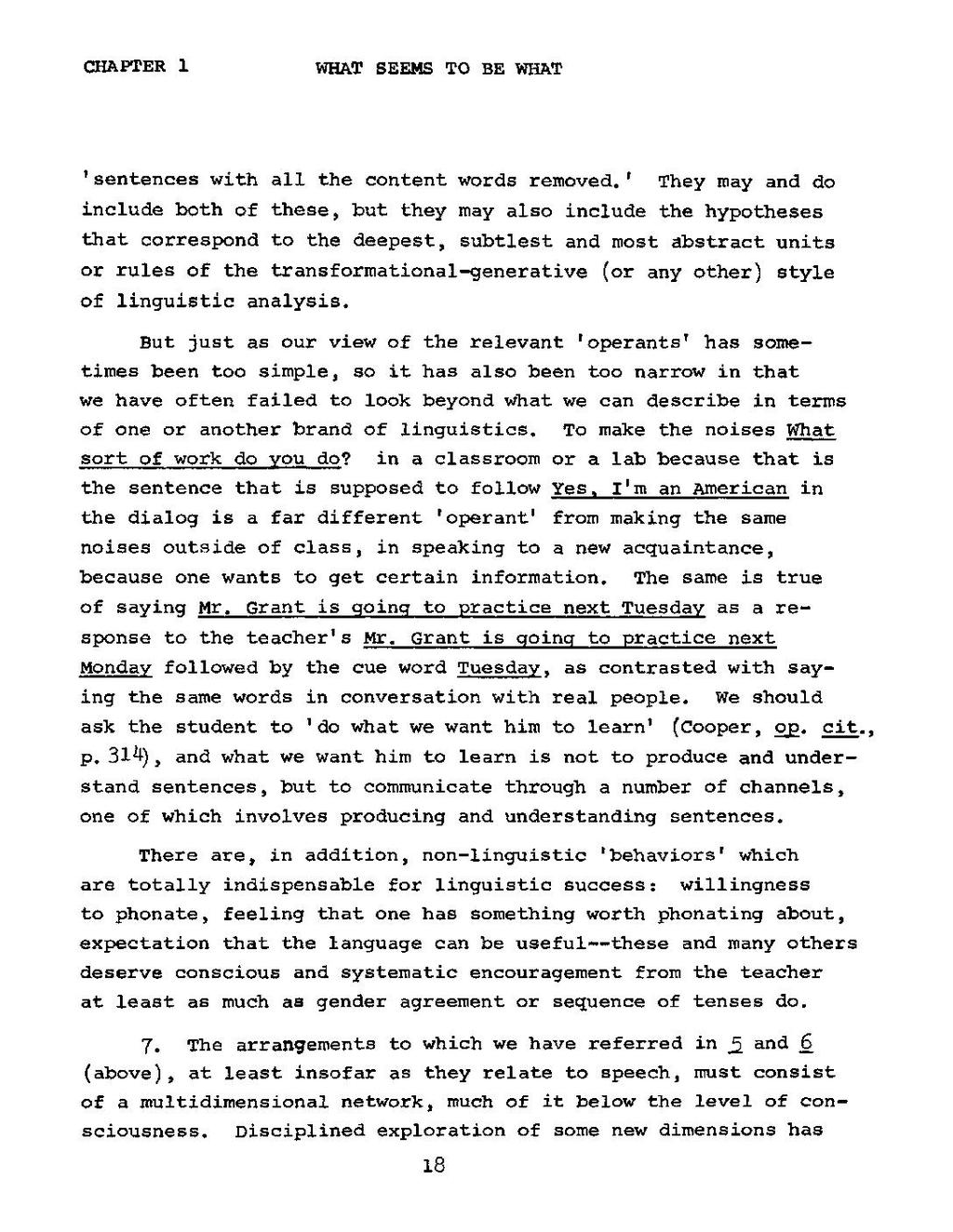'sentences with all the content words removed.' They may and do include both of these, but they may also include the hypotheses that correspond to the deepest, subtlest and most abstract units or rules of the transformational-generative (or any other) style of linguistic analysis.
But just as our view of the relevant 'operants' has sometimes been too simple, so it has also been too narrow in that we have often failed to look beyond what we can describe in terms of one or another brand of linguistics. To make the noises What sort of work do you do? in a classroom or a lab because that is the sentence that is supposed to follow Yes, I'm an American in the dialog is a far different 'operant' from making the same noises outside of class, in speaking to a new acquaintance, because one wants to get certain information. The same is true of saying Mr. Grant is going to practice next Tuesday as a response to the teacher's Mr. Grant is going to practice next Monday followed by the cue word Tuesday, as contrasted with saying the same words in conversation with real people. We should ask the student to 'do what we want him to learn' (Cooper, op. cit., p. 314), and what we want him to learn is not to produce and understand sentences, but to communicate through a number of channels, one of which involves producing and understanding sentences.
There are, in addition, non-linguistic 'behaviors' which are totally indispensable for linguistic success: willingness to phonate, feeling that one has something worth phonating about, expectation that the language can be useful--these and many others deserve conscious and systematic encouragement from the teacher at least as much as gender agreement or sequence of tenses do.
7. The arrangements to which we have referred in 5 and 6 (above), at least insofar as they relate to speech, must consist of a multidimensional network, much of it below the level of consciousness. Disciplined exploration of some new dimensions has
18
